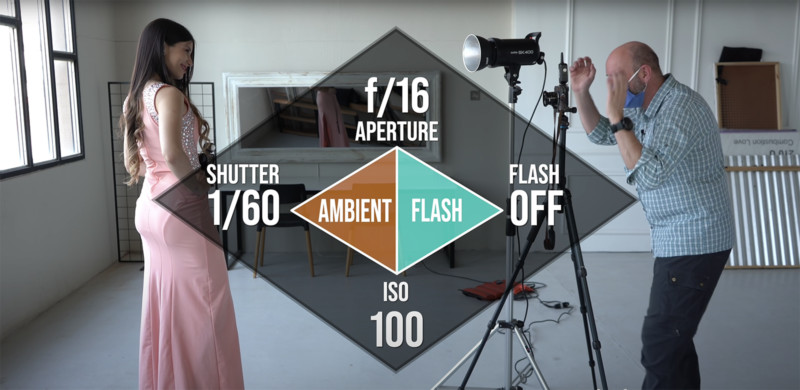You might be familiar with the exposure triangle, but in this 7-minute video, Mark Wallace from Adorama TV describes the exposure diamond and how to effectively balance a strobe with ambient light.
The exposure triangle is a term used to describe how ISO, aperture, and shutter speed work together to create an exposure, but is only really useful if you’re using a constant light source like the sun. When you want to use standard strobes, the third way to adjust exposure swaps shutter speed with flash power (with standard strobes – excluding high-speed sync – shutter speed has no effect on exposure, and high shutter speeds can actually work against you. Click here for more information on this rule).

But what if you want to use both a strobe and ambient light? In this case, your exposure triangle becomes an exposure diamond. Instead of just having to think of three ways exposure can be adjusted, you have to consider four: shutter speed, aperture, flash power, and ISO. Wallance suggests dialing in ambient light first. Because he is using strobes, though, Wallace understands that he should keep his shutter speed between 1/60 and 1/125 of a second in order to keep his shutter curtain moving at the right speed to respond to the eventual addition of the strobe. As a result, he’ll dial in that ambient exposure using mostly aperture and ISO.
Once his ambient light is where he wants it, the last step is to match the strobe power up to the other settings on his camera. He measures this by using a light meter, a critical component for strobe photography work.
Remember, the photos Wallace is taking here aren’t for, as he says, hanging on the wall. They are just designed to illustrate how to manage the exposure diamond.
For more tips like this you can subscribe to Adorama’s YouTube channel.
(via ISO 1200)